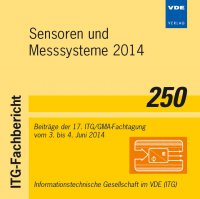Stiction Conformity Test for Electrostatic MEMS Device in Design and Simulation Process
Conference: Sensoren und Messsysteme 2014 - Beiträge der 17. ITG/GMA-Fachtagung
06/03/2014 - 06/04/2014 at Nürnberg, Deutschland
Proceedings: Sensoren und Messsysteme 2014
Pages: 6Language: englishTyp: PDF
Personal VDE Members are entitled to a 10% discount on this title
Authors:
Johar, Muhammad Akmal; Koenig, Andreas (Institute of Integrated Sensor Systems, Technical University of Kaiserslautern, 67663 Kaiserslautern, Germany)
Abstract:
The software advancement for CAD/CAE tools in MEMS design has greatly reduced the cost of new product development. Most design parameters now can be analyzed and optimized during design and simulation stages. Finite element method (FEM) simulation based software [1-2] normally consumes a lot of time and computing resources with results closer to reality. On the other hand, a simplified pre-defined finite element model based simulation software produces less accurate simulation result but with faster and less computing power. Our group has been working on design and development of DC-MEMS switches with self-x features using MEMS+ software. Electrostatic and heat actuators were embedded in the switch to provide micro movement. In our first prototype, we are facing stiction problem in electrostatic actuator fingers during switch operations. Simulation results recorded no failures in the first prototype model but the actual devices have shown a high tendency of stiction occurrences. Investigation has been done and the finding showed that low stiffness in finger structures has lead to this problem. A new stiction conformity test at design and simulation stages has been proposed. In this test, the stiffness integrity of the structure is tested to ensure the ability to withstand the electrostatic force produced by the actuator. A safety design factor S with various values of electrostatic actuator design has been introduced and implemented in the second MEMS prototype.


